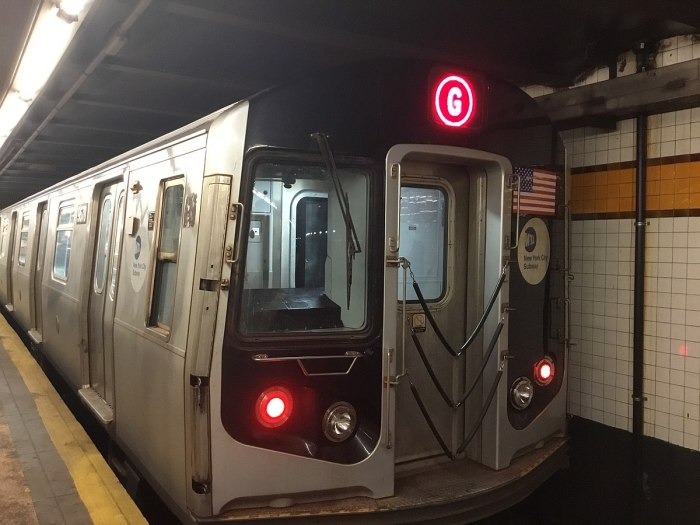Better lighting. Locked park gates. More police patrols. Swifter contact with the public.
Residents of Brownsville weren’t asking for much after the rape of a teenage girl in Osborn Playground.
On Thursday night, an 18-year-old girl was in the company of her father in a quiet corner of the playground when five teenagers approached them with a gun, told the father to leave and then raped the daughter. The father went for help and returned with two police officers, too late to prevent the sexual assault.
Four of the five alleged attackers, who are between the ages of 14 and 17, are now in custody.
This week, local elected officials and community members are asking — would the response have looked different if the playground happened to be located on a different block?
It is the great fear of a liberal mayor bent on achieving great things that the city, under his watch, might begin some long transit toward “the bad old times.”
So it was with relief, for Mayor Bill de Blasio and his police commissioner, that the year-end crime numbers for 2015 showed no large increase in crime. The major exception was in reported rapes: 1,354 in 2014 vs. 1,439 in 2015.
Last week, Commisioner William Bratton addressed the rise in reported rapes in an interview, positing that the 6 percent rise in reported rapes could be due to a “Cosby effect,” the notion that victims felt more comfortable coming forward when they saw others do the same. He also suggested a “buddy system” for women coming home late at night.
But the high-profile incident in Brownsville brought renewed focus to the crime statistics.
Perhaps wary of drawing more attention to the incident, the de Blasio administration was slow to respond, with a statement not coming until Sunday. Yesterday, the mayor said he was “unsure” when he learned of the rape. Last night a spokesman clarified that it was Sunday.
Elected officials jumped on Bratton’s week-old comments yesterday to call for increased protection for women from violence, and urged the passage of bills adding panic buttons in cabs and creating a 911 text system.
City Council member Laurie Cumbo questioned the response to a crime in a part of Brooklyn where there might be the perception that crime is “business as usual.” The precinct commander began reaching out to community leaders preliminarily the day after the assault, but didn’t alert members of the media until Saturday night.
Cumbo suggested that when people don’t think anyone’s paying attention to them, crimes are committed with more impunity.
The idea being that because it’s Brownsville, she says, “nobody cares.”
Osborn Playground was deserted yesterday, wedged between a school and a row of houses.
There were no streetlights in the park, only portable NYPD spotlights. Even in the wake of the assault, there was very little marked NYPD presence — a patrol car slowed, but didn’t stop during a visit in the afternoon — and residents say that, beyond school safety officers, this was the norm. Few reported being alerted by police as to the crime, even with media in the area.
In another neighborhood, residents would “probably know that night,” says Tatianna Williams, 26.
Many avoid the playground, which is dark and deserted at nighttime.
“My mom always tells me to walk fast,” says Tajah Wright, 17.
Barbara John, a crossing guard down the block from the playground, said that the police were focusing too much on the wrong things — cars with “tinted windows,” packed with young people — as opposed to “the right things.”
“They never stop to ask, ‘How is everything’,” John, 64, says, adding that the area was deserted when she got to work before the school hours, and in the afternoon before classes ended. She’d been threatened before with a knife, witnessed fights between kids. “I’m not safe here. I have to be looking around,” she says, doing so.
John says she plans to give up the job at the end of the year. “I like the job, but you’re not safe.”
This is amExpress, the conversation starter for New Yorkers.

































